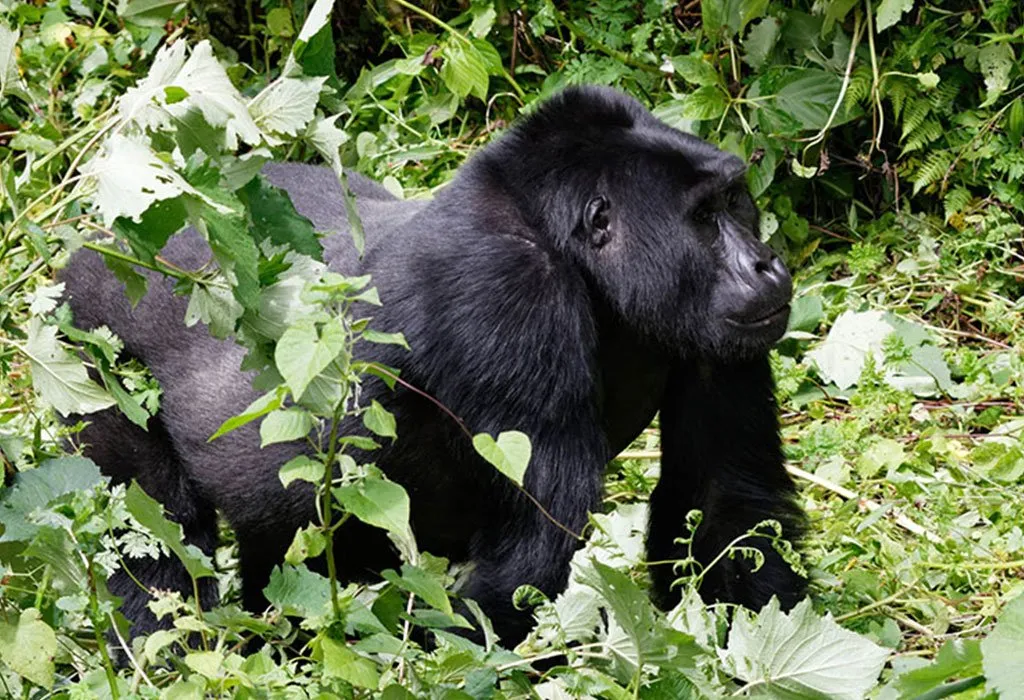- GET IN TOUCH WITH US:
- +256 753518160
- +256 777842166
- info@experiyatourcompany.com

What’s the best time of year to visit Uganda?
November 6, 2025
Can I Use Credit Cards in Uganda?
November 6, 2025What’s the Rainy Season Like in Uganda?
Uganda, commonly referred to as the “Pearl of Africa,” is one of those destinations that look equally stunning and captivating irrespective of the season. While many travelers instinctively consider the dry months as more suitable for African safaris, Uganda’s rainy season has a character and charm all its own. The rain breathes life into the landscape, rivers swell, forests glisten with freshness, and the savannahs transform into rolling carpets of lush green. For those who dare to experience it, the rainy season in Uganda reveals a different kind of beauty-wild, dramatic, and deeply authentic.
In this guide, we explore what the rainy season in Uganda is really like: when it takes place, what to expect, how it affects traveling and wildlife viewing, and why going there during this period might actually be one of your best decisions.
Understanding Uganda’s Rainy Seasons
Due to its equatorial position, Uganda has a warm tropical climate throughout the year. Its weather pattern is, however, determined by both altitude and physical geography. The country’s high elevation-most of it between 1,000 and 2,500 meters above sea level-keeps temperatures comfortable, rarely extreme, and ensures the country never experiences a true “winter.”
There are two main rainy seasons, and two dry seasons in Uganda although with regional variations.
First Rainy Season – Long Rains: March to May
Second Rainy Season (Short Rains): October to November
Between these are the dry seasons-from June to September and December to February-which are traditionally the most popular months for safaris and gorilla trekking. But even during the so-called rainy seasons, showers are often intermittent rather than constant. It’s rare for rain to last all day; most days begin with sunshine, followed by short bursts of rain in the afternoon or evening.
Rainy Season in Uganda: What to Expect
1. Weather Patterns
Rains in Uganda are always local and different from one region to another. In western Uganda, where you find Bwindi, Queen Elizabeth, and Kibale, the showers come often but usually don’t last long. The central regions, which include Kampala and Entebbe, get more predictable rainfall, whereas northern areas such as Kidepo Valley remain relatively dry, even during those months of the year when the rest of the country is wet.
Temperatures during the rainy season typically lie between 18°C and 28°C (64°F–82°F). Even on rainy days, the temperature is still comfortably warm, and the air is fresh and crisp after a rain shower.
2. Landscape Transformation
This is what the rainy season does to Uganda: a paradise of green. The dry, golden tones of the savannah give way to thick, emerald grasslands and flowering trees. The rivers and waterfalls swell, lakes shimmer with reflections, and the whole country feels alive and renewed.
The moisture lends an almost mystical quality to places like the Bwindi Impenetrable Forest and Kibale National Park. Mist hangs over the forest canopy, and the air carries the scent of rain-soaked earth and vegetation. For photographers and nature lovers alike, this is one of the most visually rewarding times to visit.
3. Wildlife Behavior
The good news, contrary to popular belief, is that the rainy season does not rid Uganda of all its wildlife. The most rewarding game viewing might just occur during or just after rainfall. The vegetation might be thicker, but animals are often more active and spread across larger areas, no longer confined to waterholes as in the dry months.
Elephants and buffalo freely wander across the open plains of Queen Elizabeth National Park as antelopes and warthogs nibble the new grass. In Murchison Falls National Park, with much power, the Nile River swells, thus making the waterfall even more spectacular. Northeastern Kidepo Valley stays semi-arid and accessible year-round, with limited rains throughout the year, even in wet months.
4. Gorilla trekking in the rain
The gorilla trekking can be done throughout the entire year, but Uganda’s rainy seasons offer a private and more adventurous time of the year: March to May and October to November. Yes, the forests are wet and muddy, but it feels most alive then. Foliage is thick, the air is cool, and often the gorillas stick closer to the lower slopes to avoid slippery ground, which can make treks slightly shorter.
For travelers willing to brave the rain, another benefit awaits: fewer tourists. Permits and accommodations are easier to secure, and some lodges offer discounts during this period. The gorillas themselves seem unfazed by the weather — their thick fur and calm demeanor make every encounter just as magical, rain or shine.
5. Birdwatching Opportunities
Uganda remains one of Africa’s best birding destinations with over 1,000 recorded species. The rainy seasons are especially good for bird-watchers because it is then that the landscape comes alive with breeding activity. Migratory birds from Europe and northern Africa arrive during these months, joining resident species in a dazzling display of color and song.
The wetland areas of Mabamba Swamp, Bigodi Wetland Sanctuary, and the shores of Lake Victoria offer great views of iconic species such as the shoebill stork, African jacanas, and malachite kingfishers. If you are into birding, you will simply love the rainy season.

Advantages of Visiting Uganda in the Rainy Season
Although many travelers prefer the dry months, there are plenty of reasons why it can be an excellent choice to visit Uganda during the rainy season:
1. Fewer Crowds and More Serenity
Tourism is slower during the rainy season, and national parks and lodges are quieter. You can enjoy Uganda’s wilderness almost to yourself without having to share viewpoints or trails with other travelers. It’s the perfect time for those who crave solitude and a deeper connection to nature.
2. Affordable Prices and Fantastic Deals
Many of these lodges, safari companies, and airlines give significant discounts during the rains since it’s considered the off-peak season. A number of gorilla permits, limited and in high demand during the dry season, are available. Often, mid-range lodges offer luxury experiences at reduced prices, which means you will be able to stretch your safari budget.
3. Lush Landscapes and Dramatic Skies
Sceneries in Uganda after rain are breathtaking. Light is softer, air is clearer, and contrasts are sharper-perfect conditions for photography. Rain clouds roll over the Rwenzori Mountains, rainbows over Lake Bunyonyi, or mist swirling around the gorillas in Bwindi-these make for stunning moments that few dry-season travelers get to see.
4. Active Wildlife and Birdlife
Where the vegetation prospers, so does the wildlife activity. Most animals give birth during the rainy season, so you could find yourself running into young calves, cubs, and foals doing their thing alongside their mothers. The birdlife is also at its peak to make every game drive and forest walk a delight for keen observers.
Challenges of the Rainy Season
Of course, traveling during the rainy months does come with a few challenges, and it’s wise to plan accordingly.
Road Conditions: Some roads, especially in remote parks, become muddy and sometimes difficult to negotiate. A 4×4 vehicle must be hired with an experienced driver-guide.
Rain gear: Trekkers and photographers should bring with them waterproof gear: ponchos, boots, and camera covers because sudden showers are common.
Insects: Rain and humidity mean more insects, mosquitoes included, so insect repellent is a must.
Limited Flights: Domestic flight schedules can sometimes be affected by weather; flexibility is key.
Despite these challenges, most travelers who visit during the rainy season find that this can be a very rewarding time to travel. Rain in Uganda rarely lasts all day, it comes and goes, leaving behind a clean and rejuvenated landscape with fresh air.
Tips for Traveling During the Rainy Season
Pack Smart: Make sure to include waterproof clothing, quick-dry pants, hiking boots, insect repellent, and a light sweater for cool evenings.
Safaris using a 4×4 Vehicle: Rains make dirt roads slippery, and only four-wheel-drive cars can manage to navigate through such routes comfortably.
Book Your Accommodations Early: Though less crowded, some lodges are closed temporarily during times of heavy rain.
Be Flexible: Weather conditions may delay certain activities, especially in mountainous regions, but your tour operator will always find alternatives.
Carry extra batteries and power banks because cloudy weather may limit solar power in remote lodges.
What the Rainy Season Feels Like
There’s something deeply atmospheric about Uganda in the rain. You might wake up to the soft drumming of raindrops on your lodge’s thatched roof, step outside into a world where mist is weaving its way lazily through banana groves, or watch as a rainbow arcs over the savannah. The air’s cooler, the scents of earth and vegetation richer, and the wildlife uncaring about the drizzle. It’s a slower, quieter version of the country-one that invites reflection and wonder.
In Bwindi, trekking through the rainforest under a light drizzle feels almost spiritual. The sounds of the forest become louder-chirping insects, birds in the distance, and the rustling of leaves as gorillas move in the shadows. At Murchison Falls, the Nile roars even louder because of the spray mingling with the rain, while at Lake Bunyonyi, mornings are often wrapped in fog so thick it feels like stepping into a dream.
what’s the rainy season like in Uganda?
In one word: magical. It’s a season of renewal and color, of quiet moments and unexpected discoveries. While it entails travel that requires a bit more flexibility, the rewards are immense: fewer crowds, lower prices, incredible bird life, and some of the most photogenic sceneries in Africa. If you’re the kind of traveler who values authenticity over predictability, Uganda’s rainy season offers an experience like no other.
Given proper preparation and guidance, it can be a highlight of your African journey. To make the most of it, it’s wise to travel with a reliable, experienced local operator. Experiya Tour Company is a specialist in tailor-made safaris and gorilla trekking tours all over Uganda, guaranteeing comfort and safety to ensure lifelong memories in rain or shine. With their expertise, 4×4 vehicles, and professional guides, Experiya makes exploring Uganda in the rainy season effortless; let yourself be enchanted by the magic of the journey itself.




